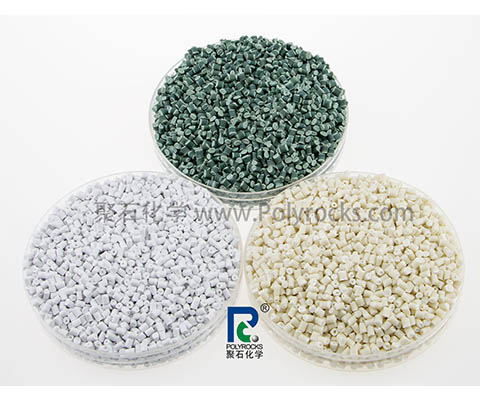Polypropylene (PP) is abbreviated as PP, which is a kind of thermoplastic made by polymerization of propylene. Polypropylene is a non-toxic, odorless, and tasteless milky white highly crystalline polymer with a density of only 0.90-0.91g/cm3. It is currently one of the lightest varieties of all plastics.
Modified PP materials are prepared through the screening of resins, fillers and additives, as well as the use of advanced production equipment and optimized process conditions. The product categories include filling, reinforcement, flame retardant, antistatic, antibacterial, weather resistance, etc., mainly involving Home appliances, sports, medical, industrial parts and other fields. The PP material itself is colorless and odorless, but after modification, the PP modified material often has an odor. Many plastic products have requirements for the odor control of materials, especially car interiors. Let's take a look at the source of the odor of PP modified materials and the key points of control.

The source of PP material smell
The source of PP material odor runs through the entire processing process. From the polymerization, modification, and molding of raw materials, volatile residues or small molecules are generated to form odors.
1. Polymerization stage: Residues of monomers, catalysts, emulsifiers, by-products, oligomers, etc. during the synthesis of raw materials.
2. Modification stage: volatile small molecule compounds produced by the decomposition reaction of raw materials, additives, fillers, etc. in the formula.
3. Molding stage: small molecules generated by material degradation caused by screw shear during injection molding.
Key points for controlling the smell of modified PP materials
To control odor, it is necessary to control the production of small molecules. To control the odor of PP materials, it is necessary to start with the selection of resins, the selection of fillers, the combination of processing aids, the molding and post-treatment processes.
1. Screening of resin: using hydrogen modulation method, no additional substances are added, and the odor is low.
2. Filler selection: use high-purity talcum powder.
3. Combination of processing aids: Use functional aids to reduce the smell of materials.
4. Molding and post-processing technology: reasonable control of extrusion temperature, screw speed, screw combination and residence time, vacuum pelletizing method, etc.
Copyright © POLYROCKS CHEMICAL CO., LTD. All Rights Reserved |
Sitemap
| Powered by
 粤ICP备10040394号
粤ICP备10040394号
CONTACT US
QUICK ENQUIRE FORM
* Indicate Mandatory fields